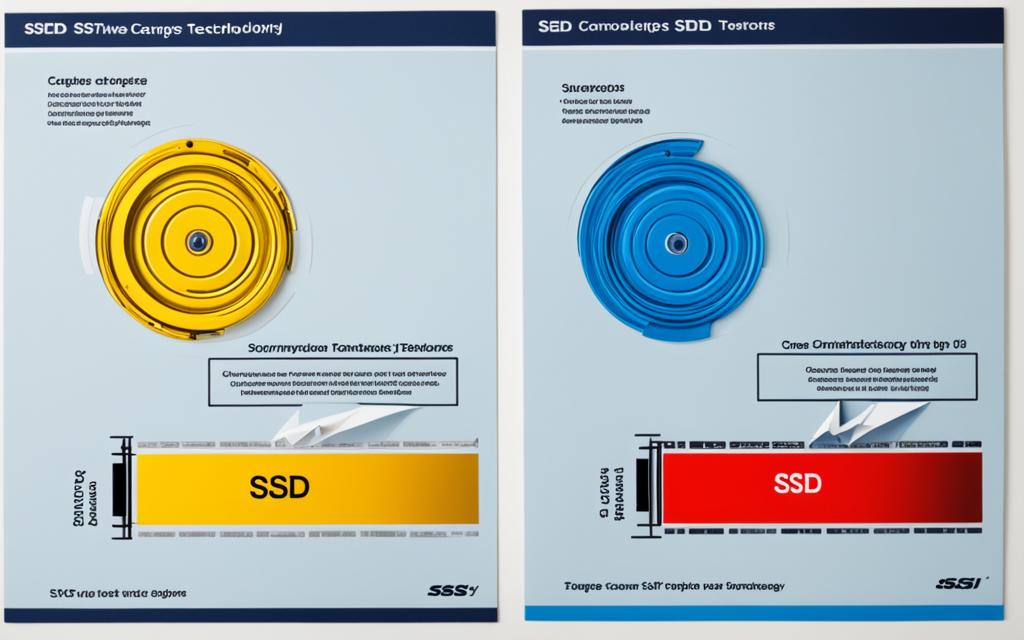Table of Contents
Understanding the differences between Social Security Disability (SSD) and Supplemental Security Income (SSI) is important. These programs help people who can’t work because of disabilities. SSD is like insurance, using your work history and Social Security contributions. In contrast, SSI depends on financial need and doesn’t look at work history. In 2024, the SSI benefit is $943 a month for individuals and $1,415 for couples. It’s key to know how you qualify for each program to get the most benefits1. We will explore how these programs work, their requirements, and the support they offer.
Key Takeaways
- SSD is based on work history and Social Security contributions.
- SSI is need-based and does not require prior work history.
- The 2024 SSI monthly benefit is $943 for individuals.
- SSD payments average around $1,537 per month in 2024.
- Medicaid coverage is typically available for SSI beneficiaries.
- Understanding the differences in eligibility can significantly impact financial(‘s) support.
Understanding SSD and SSI Programs
Social Security Disability (SSD) and Supplemental Security Income (SSI) are important for people with disabilities. They offer two types of help, based on different needs. It’s key for anyone looking for assistance to understand what each program offers.
SSD focuses on those who’ve worked and paid into the Social Security system. To get SSD, you need to show you’re disabled according to the Social Security Administration (SSA) rules. People over 31 must have worked at least 5 of the last 10 years. Younger applicants have different rules based on age and disability onset2. SSD doesn’t have income or asset limits, just checks if you can work and are unwell. It’s crucial for those without money to rely on.
Overview of Social Security Disability (SSD)
SSI, on the other hand, helps based on financial need, not work history. It’s for blind, disabled, or those over 65, regardless of past work2. You must have little money and few things you own, below $2,000 for a single person or $3,000 for couples. The most someone can get per month is $764.25 for singles and $886.00 for couples in New Jersey3. SSI starts paying from the month after applying, with no back pay. Knowing about SSD and SSI can guide people in tough times to the right support.
What is the difference between SSD and SSI?
Understanding the key distinctions between SSD and SSI is crucial for those seeking financial help due to disabilities. It’s important to know the specific SSD eligibility criteria and SSI eligibility criteria. This knowledge helps decide which programme fits one’s needs best.
Eligibility Criteria for SSD
To qualify for SSD, one’s work history is examined. You must have worked at least five of the last ten years before becoming disabled. This is important because younger applicants may qualify with less work time4. Also, you need to show medical proof of your disability. This proof must align with the Social Security Administration (SSA) standards. The amount you get is based on your average earnings over your lifetime. This adjusts every year for inflation. So, those who earned more will receive more5.
Eligibility Criteria for SSI
On the other hand, SSI looks at financial need. This makes it available to those with lower incomes and fewer resources. This includes the blind, elderly, or disabled. Unlike SSD, SSI doesn’t require you to have a work history. Yet, you still must present medical proof of your disability. Your income and resources are thoroughly checked5. SSI benefits may also include extra funds from the state you live in6. The way SSI benefits are calculated is by subtracting any income you have from the Federal Benefit Rate. This ensures the help goes to those who need it most5.
| Criteria | SSD | SSI |
|---|---|---|
| Work History Required | Yes (5 of the past 10 years) | No |
| Funding Source | Social Security trust fund | General tax revenues |
| Eligibility Basis | Work contributions | Financial need |
| Medical Documentation Required | Yes | Yes |
| Supplementary Payments | No state supplements | Possible state supplements |
This table highlights the differences in eligibility between SSD and SSI. It helps guide individuals to choose the right programme for their situation.
Financial Resources and Income Requirements
It’s vital to know the financial rules for Social Security Disability Insurance (SSD) and Supplemental Security Income (SSI). SSD gets its funds from taxes paid into the Social Security system. This setup means you must have worked before to get SSD benefits.
How SSD is Funded
SSD is paid for by taxes from workers and their employers. Those who are eligible have paid into the system through their jobs. The benefits one gets are based on their earnings history. This means the longer and more you’ve paid in, the more you can get7. There’s no cap on how much you can earn while on SSD. This allows people to increase their income without losing benefits8.
How SSI is Funded
SSI, on the other hand, uses general tax money and doesn’t depend on your work history. It’s there for people who have low income and not much in savings. To get SSI, you can’t have more than $2,000 if single or $3,000 for couples7. SSI also looks at your income to decide your benefit amount. Those with assets over $2,000 won’t qualify8. Getting SSI also means you can get Medicaid right away, which helps cover medical costs while waiting for SSI help7.
Medical and Non-Medical Requirements
It’s vital to understand both the medical and non-medical rules for Social Security Disability Insurance (SSDI) and Supplemental Security Income (SSI). For SSD, medical requirements are vital. Applicants need to show medical proof that their disability affects their ability to work. Many applications are denied at first because they don’t have enough evidence. So, it’s crucial to provide detailed documentation that meets the Social Security Administration’s (SSA) standards9.
Medical Documentation for SSD
To be eligible for SSD benefits, one must provide enough medical evidence following the SSA’s rules. This includes statements from doctors saying the disability will last at least 12 months or result in death9. The SSA has a Blue Book that lists medical conditions which qualify for benefits automatically9. The medical evidence must show that the applicant cannot work. This is important because most claims are initially denied due to the condition’s severity or insufficient medical documentation10.
Medical Documentation for SSI
Medical proof is just as crucial for SSI applicants, as they need to prove a disability that fits the SSA’s strict criteria. Besides medical documentation, SSI also considers financial status. An individual’s assets must not exceed $2,000, or $3,000 for a couple11. This means applicants must handle both medical and financial requirements. Knowing all these different parts is key to applying successfully11.
Benefits and Coverage Comparison
It’s important to know how SSD and SSI benefits differ for anyone thinking of applying. Each program gives unique financial help suitable for various needs. The monthly cash benefits comparison explains these differences. It shows how each can aid people with disabilities or financial troubles.
Monthly Cash Benefits of SSD
SSD benefits depend on your past income, reflecting what you’ve contributed while working. The maximum benefit changes yearly due to inflation adjustments by the Social Security Administration. You start getting SSDI benefits six months after your disability claim is approved. And, after two years, you might get Medicare12. This is key for those needing extensive healthcare as they handle their disabilities.
Monthly Cash Benefits of SSI
SSI benefits start straight away, either right after the application month or upon qualification13. This quick start helps those with little money greatly. SSI pays less than SSDI, based on your income and basic needs. To get it, your monthly income must be $1,913 or lower. Unlike SSD12, SSI includes long-term care and Medicaid without extra cost. This support is essential for disabled people or those over 65, letting them get the services they need without financial worry.
Conclusion
It’s key to know the differences between SSD and SSI if you’re seeking help owing to disabilities. These programmes are crucial but have varied eligibility, funding, and benefits. For example, SSD needs you to have worked for 20 quarters in the last 40, unlike SSI which looks at your financial need1415.
SSI gives an average monthly benefit of $943. In contrast, SSD awards around $1,53716. This shows why knowing which programme suits your situation is vital. If eligible for both, you could get combined support. This boosts your financial well-being and healthcare access. SSI leads to Medicaid, and SSD to Medicare after two years15.
To decide on financial help, understanding SSD and SSI is crucial. By knowing their key differences, you can choose better. This choice steps you closer to financial stability and empowerment1416.
FAQ
What are the primary differences between SSD and SSI?
SSD focuses on work history and payments into the Social Security fund. SSI helps those with minimal income and assets, without considering work history.
How do I know if I qualify for SSD?
To get SSD, you need a solid work history and must have paid Social Security taxes. You also need to prove a disability that matches the Social Security Administration’s criteria.
What are the income limits for SSI?
SSI requires your resources to be under ,000, or ,000 for couples. Going over these amounts means you can’t get benefits.
Are there medical requirements for SSD and SSI?
Yes. For SSD, you must show detailed proof of your disability. SSI needs medical proof too, but you also have to prove you need financial help.
How are the benefits calculated for SSD and SSI?
SSD benefits depend on your past earnings and your contributions. SSI benefits are set by the government and might differ by state. SSI usually offers less money than SSD.
What kind of coverage do beneficiaries receive from SSD and SSI?
SSD gives Medicare after two years of benefits. SSI users get Medicaid immediately, helping them without delay.
Can I receive both SSD and SSI benefits simultaneously?
Yes, some people can get both SSD and SSI. However, this depends on their income and resources.
Where does the funding for SSD and SSI come from?
Workers and employers pay Social Security taxes to fund SSD. SSI is paid for by government funds, not by the people receiving it.
Source Links
- https://specialneedsanswers.com/three-big-differences-between-ssi-and-ssdi-14866 – SSI vs SSDI: 3 Major Differences
- https://www.alperinlaw.com/library/understanding-the-difference-between-ssd-and-ssi-benefits.cfm – Receiving Both SSD and SSI Benefits
- https://www.lsnjlaw.org/legal-topics/disability/ssdi-ssi/pages/difference-ssd-ssi-aspx – No title found
- https://ssdisabilityaccess.com/faqs/what-s-the-difference-between-ssdi-and-ssi/ – What’s the difference between SSDI and SSI? – Disability Advocates Group
- https://soarworks.samhsa.gov/article/overview-of-social-security-disability-programs-ssi-and-ssdi – Overview of Social Security Disability Programs: SSI and SSDI
- https://www.ssa.gov/redbook/eng/overview-disability.htm – Overview of our Disability Programs | The Red Book
- https://www.kentuckycourage.com/social-security-disability/ssd-ssi-differences/ – SSDI or SSI? Differences Explained
- https://www.specialneedsalliance.org/the-voice/comparing-social-security-disability-insurance-ssdi-and-supplemental-security-income-ssi-2/ – Social Security Disability Insurance vs Supplemental Security Income
- https://www.wewinthetoughones.com/what-is-the-difference-between-medical-and-non-medical-disability/ – What Is The Difference Between Medical and Non-Medical Disability?
- https://www.disability-benefits-help.org/blog/medical-non-medical – Difference Between Medical and Non-Medical Disability?
- https://www.cuddiganlaw.com/blog/non-medical-requirements-for-social-security-disability.cfm – Non-Medical Requirements You Must Meet to Qualify for Social Security Disability
- https://www.hoskinsandturco.com/disability/what-is-the-difference-between-social-security-insurance-and-social-security-disability – Social Security Insurance | Social Security Disability Difference | Hoskins Turco Lloyd & Lloyd
- https://ascenddisability.com/ssd-vs-ssi-key-differences-to-consider/ – SSD And SSI: What’s The Difference? | Free Case Review
- https://brossfrankel.com/2019/08/27/ssd-vs-ssi/ – Difference Between SSI and SSDI
- https://gotocourtforme.com/the-difference-between-social-security-disability-and-supplemental-security-income-ssi-understanding-which-one-you-may-qualify-for/ – The Difference Between Social Security Disability and Supplemental Security Income (SSI): Understanding Which One You May Qualify For – Go to Court for me
- https://www.erichuntattorney.com/differences-between-ssi-and-ssdi – Big Differences Between SSDI and SSI Program | Benefits








